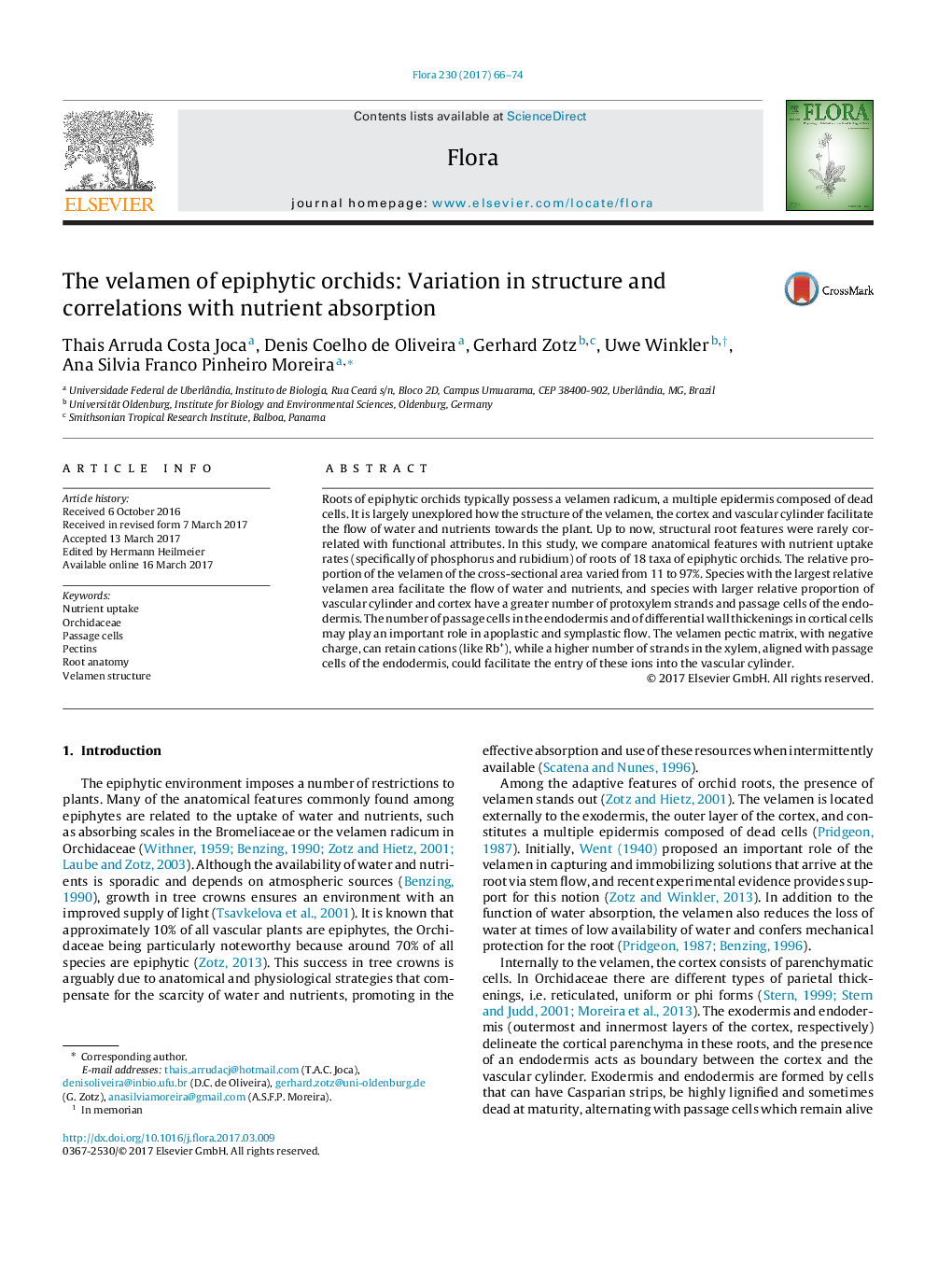| Article ID | Journal | Published Year | Pages | File Type |
|---|---|---|---|---|
| 5532389 | Flora - Morphology, Distribution, Functional Ecology of Plants | 2017 | 9 Pages |
â¢Orchid roots invest in different tissues to maximize water absorption.â¢The greater the root thickness, the greater the number of protoxylem strands.â¢The thicker the velamen, the lower the number of passage cells of the exodermis.â¢Velamen cell walls are formed by pectic matrix.â¢The negative charge of pectins may lead to temporary retention of cations.
Roots of epiphytic orchids typically possess a velamen radicum, a multiple epidermis composed of dead cells. It is largely unexplored how the structure of the velamen, the cortex and vascular cylinder facilitate the flow of water and nutrients towards the plant. Up to now, structural root features were rarely correlated with functional attributes. In this study, we compare anatomical features with nutrient uptake rates (specifically of phosphorus and rubidium) of roots of 18 taxa of epiphytic orchids. The relative proportion of the velamen of the cross-sectional area varied from 11 to 97%. Species with the largest relative velamen area facilitate the flow of water and nutrients, and species with larger relative proportion of vascular cylinder and cortex have a greater number of protoxylem strands and passage cells of the endodermis. The number of passage cells in the endodermis and of differential wall thickenings in cortical cells may play an important role in apoplastic and symplastic flow. The velamen pectic matrix, with negative charge, can retain cations (like Rb+), while a higher number of strands in the xylem, aligned with passage cells of the endodermis, could facilitate the entry of these ions into the vascular cylinder.
